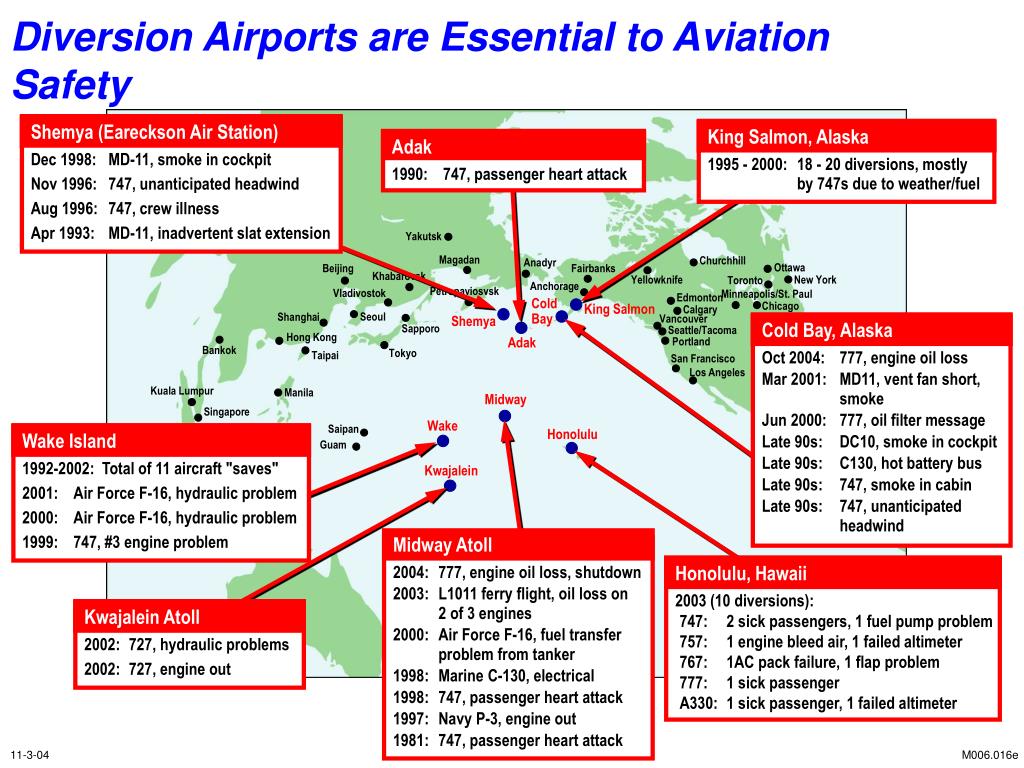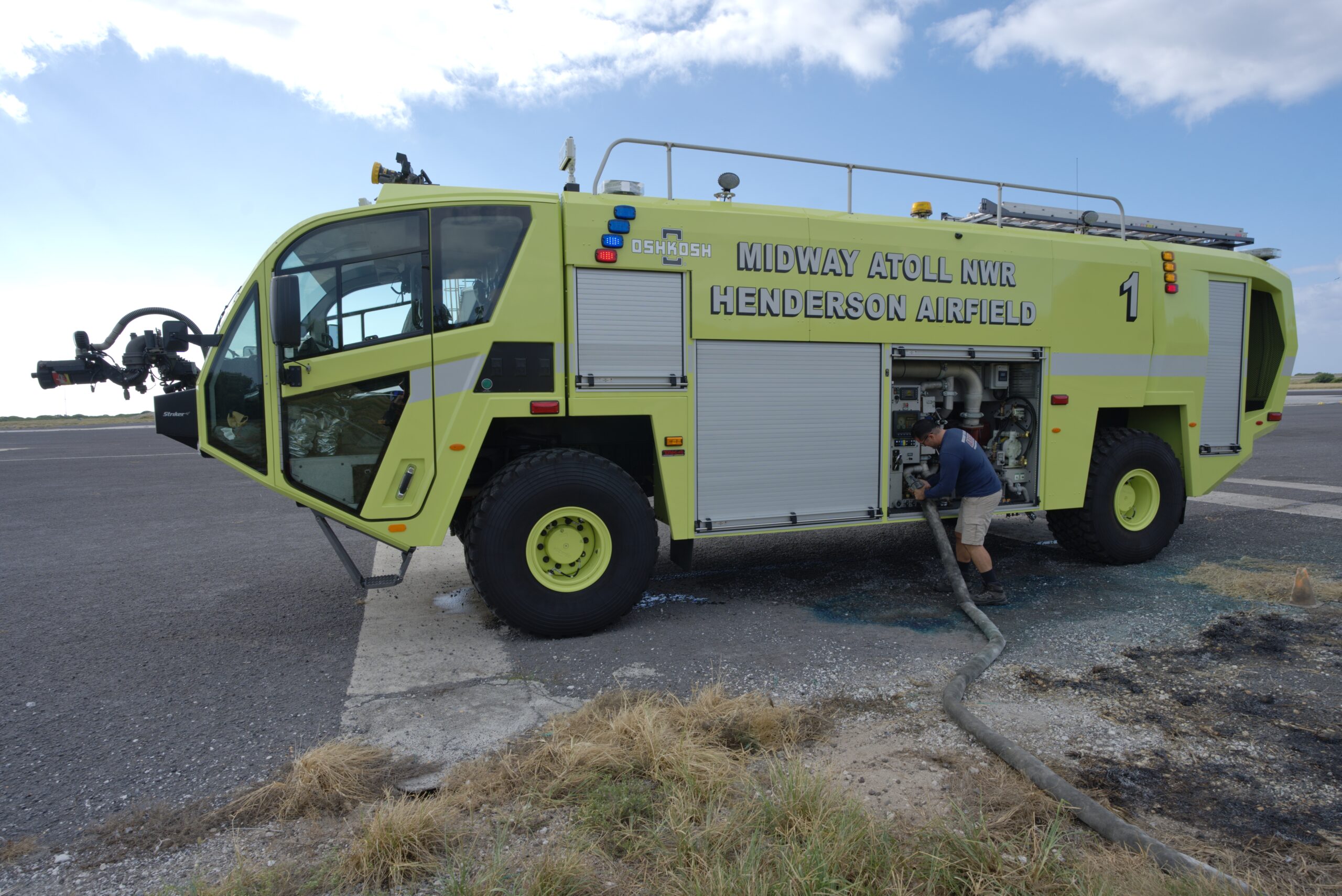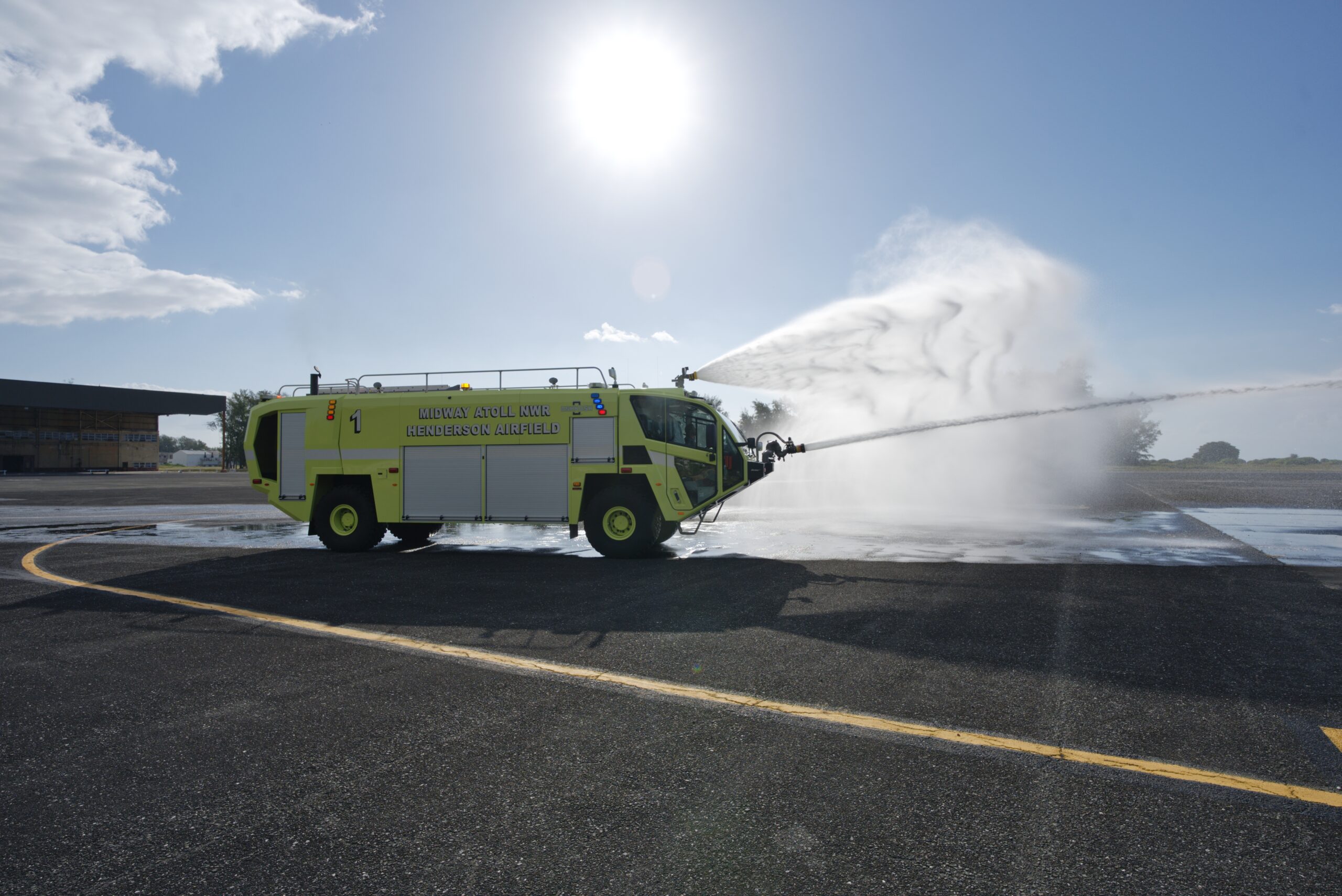You might not think of needing a fire department on a tropical island, but when you occupy the kind of critical space that Midway does, it’s absolutely essential. Midway Atoll is also known by its Hawaiian name, Kuaihelani, which means “the backbone of heaven”. This backbone sits in a very unique spot in the Pacific Ocean—kind of a “Goldilocks Zone”, if you will. If you are flying over the Pacific Ocean and there’s a problem, chances are you’ll have to land on Midway Atoll. The good news is “Airport” Don Llewellyn, and firefighters Roberto Torres and Blaine Slatton will be there to help.

The airport at Midway Atoll, Henderson Field (named for Battle of Midway casualty Major Lofton R. Henderson) sits smack dab along a line of points that operate under ETOPS (the Extended-range Twin-engine Operation Performance Standards). ETOPS establishes diversion points for all twin-engine aircraft which must stay within one hour of an airfield at all times. This means Midway must maintain an active runway at all times, and it means the Henderson Field Fire Department must be ready to go at a moments notice.

Midway Atoll National Wildlife Refuge's Henderson Airfield
Firefighter and Marine Veteran Roberto Torres knows all too well how serious those situations can be. In the last 11 years there have been 12 emergency landings on Kuaihelani, with four occurring last year during Roberto's tenure. Each time a commercial or military plane must land at Henderson Field, there is potential for huge casualties, and Roberto and Blaine have to be ready. For this reason, the FAA works with Congress and the U.S. Fish and Wildlife Service to keep Henderson Airfield open and running smoothly.

Of particular need is keeping the fire department stocked with all of the latest firefighting equipment. If an airplane lands on Midway with engine trouble or flammable cargo, Kuaihelani including its human and wildlife residents are at risk. Increasing the level of difficulty is the lack of a fresh water source on Kuaihelani. If Roberto and Co. have to put out a jet fuel fire, they have to carry their own water. This led to the FAA’s decision to outfit the firefighters with two new top of the line OshKosh Firetrucks. They can now carry enough water to handle any emergency, without having to return to the reservoir for more precious liquid.

Life for firefighters is a little more relaxed on Kuaihelani than most people are used to. Roberto, Blaine, and Airport Don keep to a routine most days that might not seem exciting to everyone. But if you’re flying at 30,000 feet and the oxygen masks start falling from above, you will be glad to know the team at Henderson Field is ready for your emergency, no matter what the situation.
all photos by US Fish and Wildlife Service Volunteer Dan Rapp
